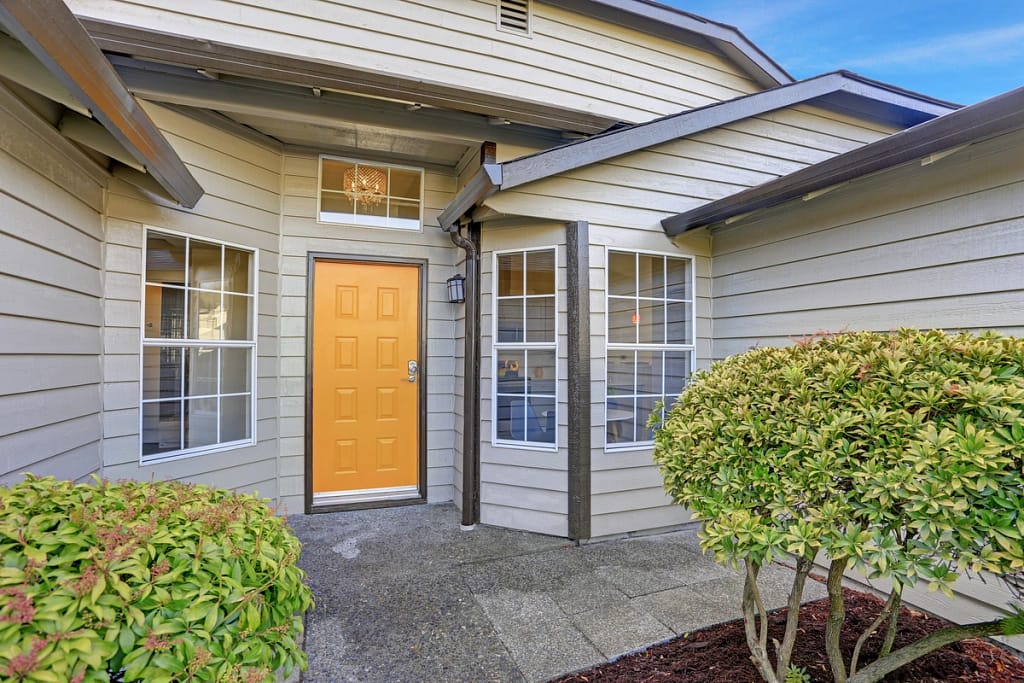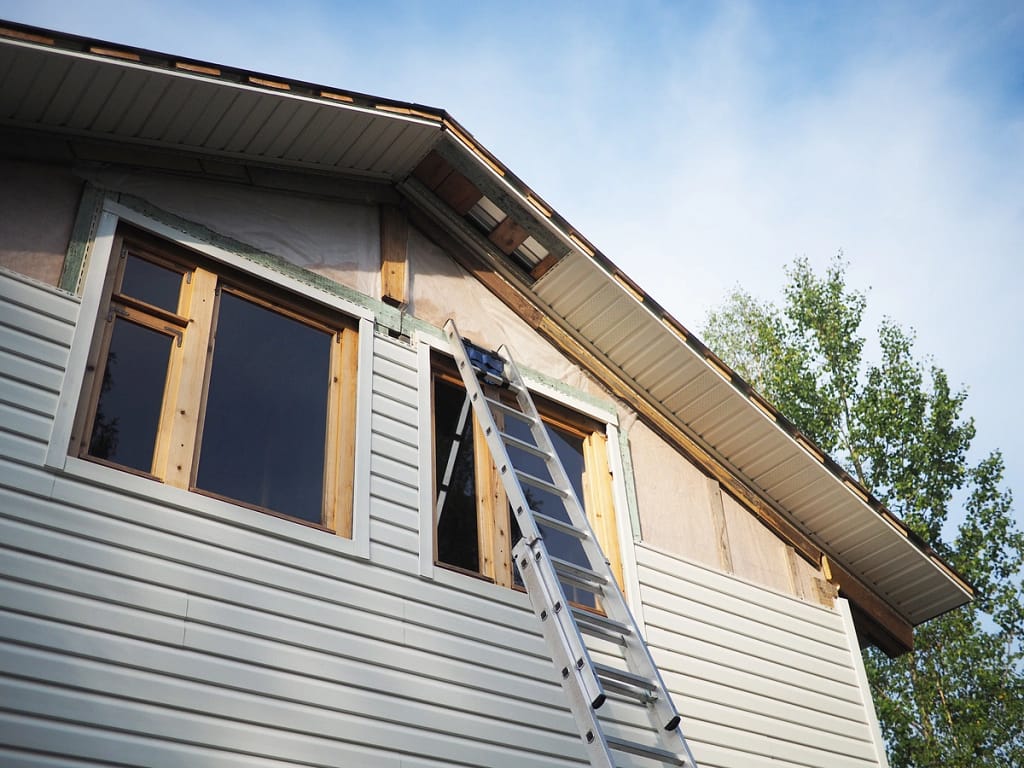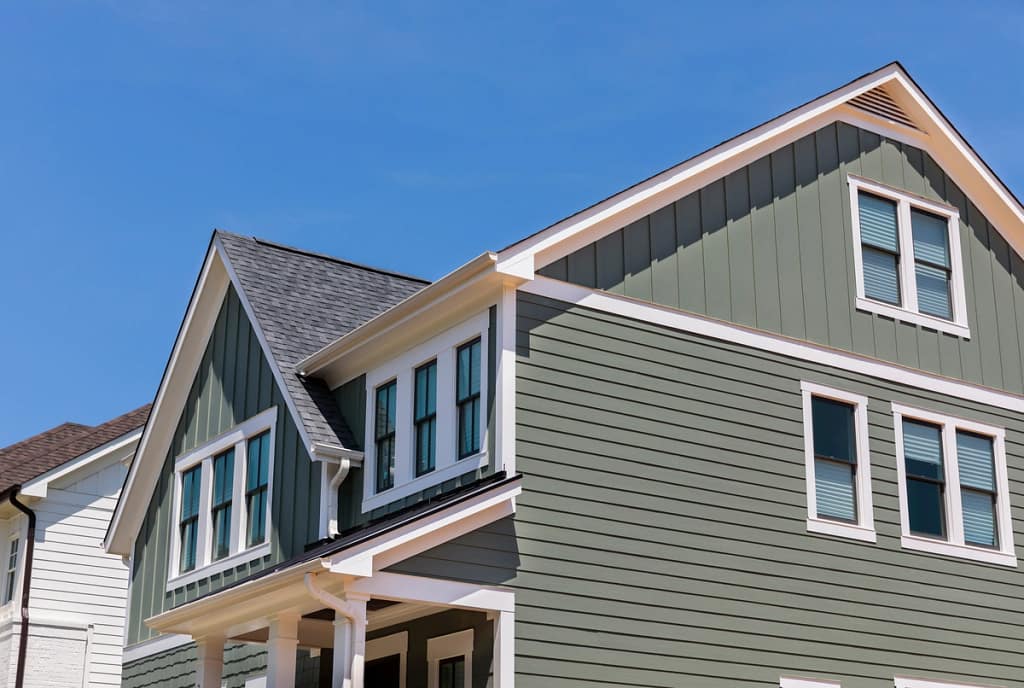How Much Does Siding Cost to Install? (Cost Guide)
Your home’s siding is its first line of defense against the elements. Therefore, it’s subject to all the harsh effects brought on by the climate in your area, which can mean exposure to extreme temperatures, wind, storms, sand, salt, debris, hail, and more. For most homeowners, this means you will eventually have to replace your home’s siding when it inevitably becomes worn out or damaged.
As we all know, clean and attractive siding can significantly impact your home’s curb appeal, which makes it an essential investment. So, the real question is, how much will new siding cost to install?
Consider this your quick and simple guide to siding installation costs. Read on to learn more.
How Much Does Siding Installation Cost on Average?

The national average for siding installation is roughly $10,693. However, it can range anywhere between $5,630 and $17,388, depending on a variety of factors. When broken down into square footage, siding costs between $2.33 and $15.33 on average, which means it could end up costing you well over the estimated range.
When it comes to the siding materials alone, homeowners spend an average range of $1 to $10.66 per square foot, depending on the type of material used. This is just one of the many factors that determine the ultimate cost of siding installation, along with labor rates which can increase by chosen material.
How Siding Installation Costs Are Determined
To create a more accurate budget for your new siding project, you’ll need to understand how siding installation costs are determined. As mentioned above, there are a variety of factors that go into determining the ultimate costs, and materials and labor are only two of those factors.
Let’s take a look at all of the things that go into siding installation costs:
1) House Size
The size of your home will have a significant impact on how much your new siding will cost. In essence, the bigger the house, the more surface area there is to cover — which means the more materials and labor required for the job. The size of your home will also affect the cost of other minor elements, such as insulation and window flashing, and even permits in some locations.
Knowing the size of your home can help you come up with a baseline estimate where you can calculate the cost of your chosen materials by square footage against the surface area of your home.
2) House Shape

Most homeowners don’t realize this, but the shape of your home is a critical factor in siding installation costs. This is because a home’s shape can add a certain degree of installation difficulty or even risks.
For example, a ranch-style home is only one story and therefore simple. A two or three story home, however, may have dormers, turrets, complex roof angles, and other elements that require more precise measuring and cutting. Unusually shaped homes also create more waste materials due to the cutting and fitting into specific shapes and angles.
3) Type of Siding Material Used
The type of siding material you plan to use is another critical factor in what your installation cost will look like. There are a lot of different materials you can choose from, including:
- Vinyl
- Engineered wood
- Real wood
- Stone
- Stone veneer
- Brick
- Brick veneer
There are quite a few more, but these are among the most popular, and they each range in cost per square foot.
For example, wood siding costs start at $2 per square foot and can reach up to $13.75 per square foot, depending on the species. Stone, on the other hand, can cost upwards of $50 per square foot.
(We’ll cover siding cost breakdown by material in more detail later on).
4) The Quality of Siding Materials Used

Another thing most homeowners don’t think of is the fact that all siding materials vary in quality. Depending on the type of siding material, you’ll find that they can be broken down into categories of:
- Good
- Better
- Best
In some instances, the materials will be rated by their thickness or level of design atop the material. This factors into the range of pricing per each type of material, which is important to discuss with your contractor to determine the type of material and quality that fits your budget and goals.
5) Labor
The cost of labor for siding installation will depend on the current market rates in your area. On average, labor charges are between $1 and $4 per square foot. However, the cost of labor will also depend on whether the labor is priced hourly or by the job, and other factors such as material type and home shape will come into play here.
When hiring a siding contractor, be sure to inquire about how the labor cost is broken down and how it is affected by other factors, including materials, delays, and weather.
6) Old Siding Removal
Depending on the insulation and type of cladding beneath your home’s existing siding, your contractor may or may not be able to apply new siding directly over it. Ideally, a clean base is preferred, but there are certain types of siding that can be installed over others.
For example, vinyl siding or aluminum siding can be installed right over older wood siding, while newer materials require the removal of old materials for installation. Removing existing siding will add to your labor costs as well as the expense of material disposal.
7) Permits and Inspections

Each municipality has its own set of rules and building codes regarding permits and follow-up inspections. While siding repairs don’t typically require a permit, a whole-home siding project usually does because it involves changing the exterior material of a home. This is because there may be tax assessment implications associated with new siding installation and it may involve the removal or shifting of electrical connections (temporarily).
Permits and inspections each come with their own fees, and they’re not something you can legally avoid. To get an idea of what permits and inspections will cost in your area, get in touch with your local building permit office and tax assessor to find out more.
8) The Time of Year
Siding contractors have their busy seasons and slow seasons. Depending on where you live, these seasons may vary. More often than not, jobs booked during the slower seasons will cost less compared to the busier seasons.
If possible, you’ll want to book your siding installation job during the slower season to save a bit on siding cost. However, there may be seasons, such as winter, where job bookings are unavailable due to weather disruptions.
Siding Costs By Material
Now, let’s take a closer look at siding costs by material:

- Vinyl siding: Vinyl siding is the most commonly used siding for homes as it’s inexpensive, durable, and comes in a wide range of colors and styles. On average, vinyl siding will cost between $6,150 and $15,900 depending on the above factors.
- Wood siding: Wood siding is another popular option as it’s relatively affordable and gives homes a classic look. The wood species you can choose from include pine, spruce, cypress, Douglas fir, cedar, log (half and full), and redwood. While the average wood siding costs between $7,000 and $23,000, it’ll depend on the type of species you choose as well as additional costs such as weather treatment and pain.
- Engineered wood siding: Engineered wood is a great option when you can’t afford the real thing as it’s still made up of wood fibers. Engineered wood will cost you between $3,000 and $5,000, and it’s fairly easy to install.
- Brick siding: Brick is a traditional material that retains heat well — which is also why it’s not seen as much in hotter climates. While brick is still an excellent choice, it’s installation is labor intensive, and the cost of that installation is between $10,000 and $75,000.
- Fiber cement siding: Fiber cement siding — also referred to as Hardie board — is another adorable and durable type of siding that looks like wood siding. However, it’s both weather and pest-resistant. It’s also fairly low maintenance, and you can expect the cost of installation to range from $4,700 and $13,300, although some brands can cost up to $20,000.
- Stone veneer siding: Stone veneer siding is the more affordable option for homeowners who prefer real stone. It requires little maintenance but must be installed correctly, otherwise it can become damaged easily. Stone veneer siding is also heavy and labor intensive, and will cost around $105,000 for an average-sized home. However, it can be mixed with other types of siding for a unique (and more cost-effective) aesthetic.
Time for New Siding?
When it’s time for new siding, you don’t have to worry so much about the cost. We offer customized exterior options for all budgets, so you can give your home the refresh and protection it needs without going overboard.
Get in touch with us today to learn more about our siding installation services and more!



